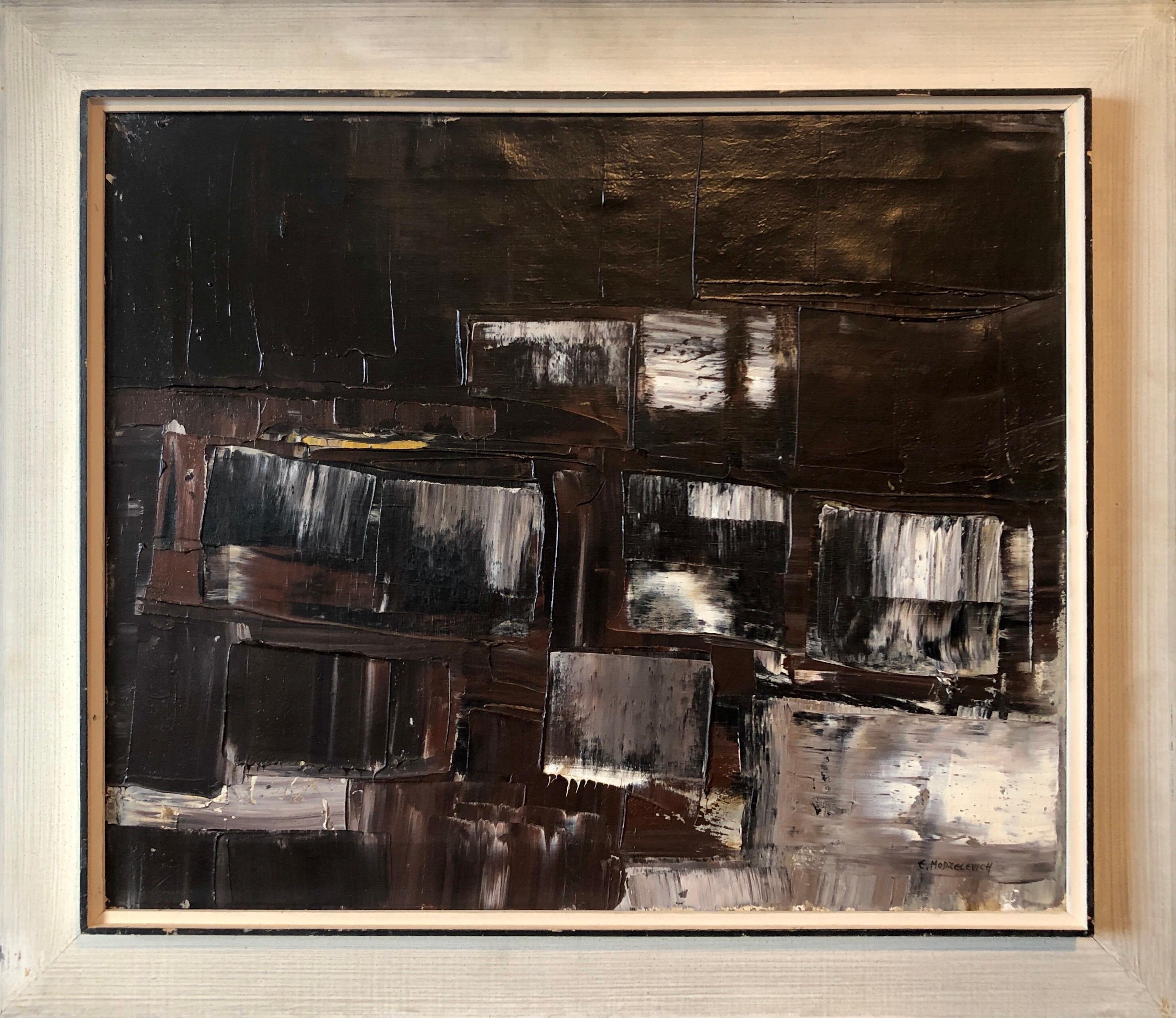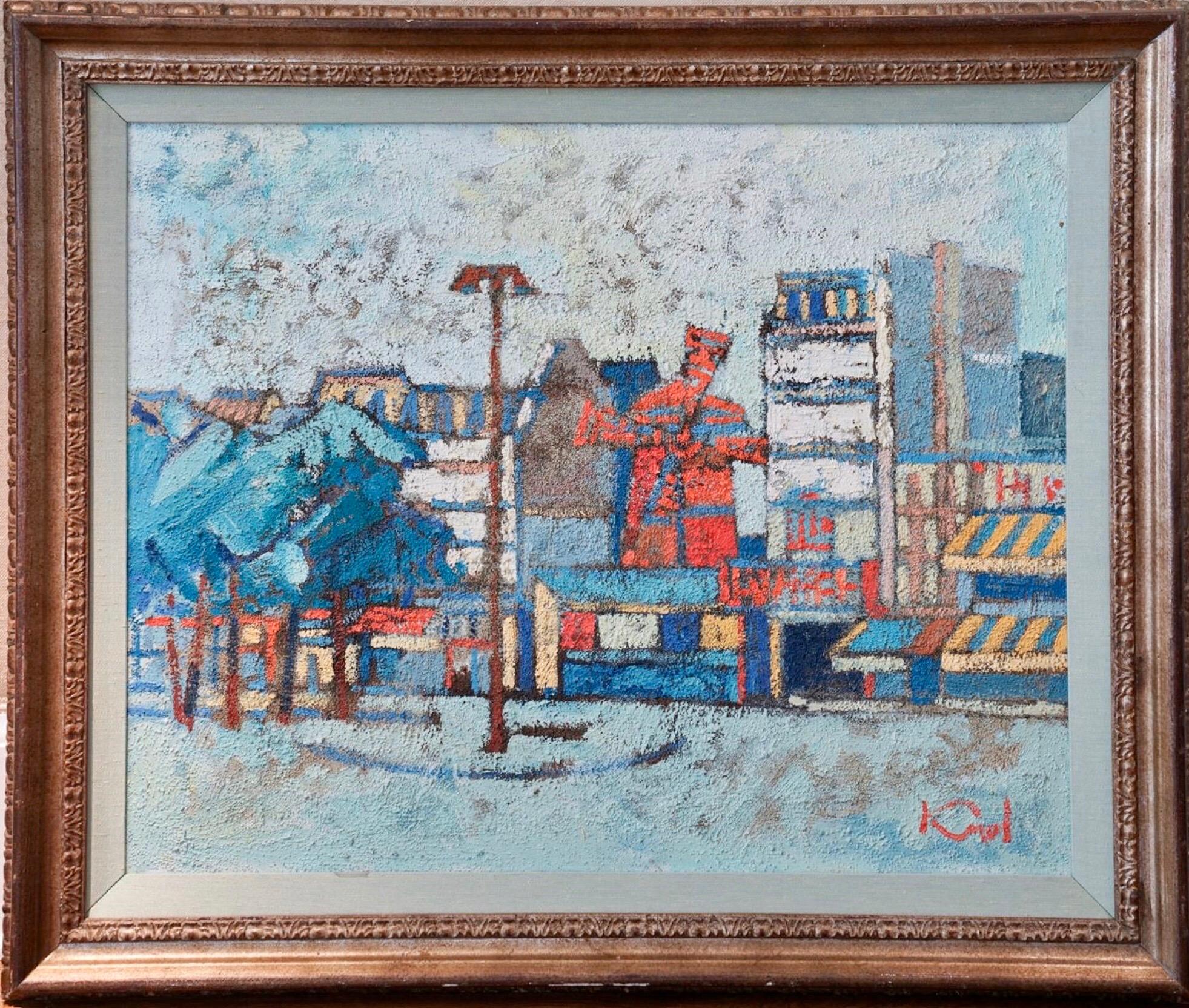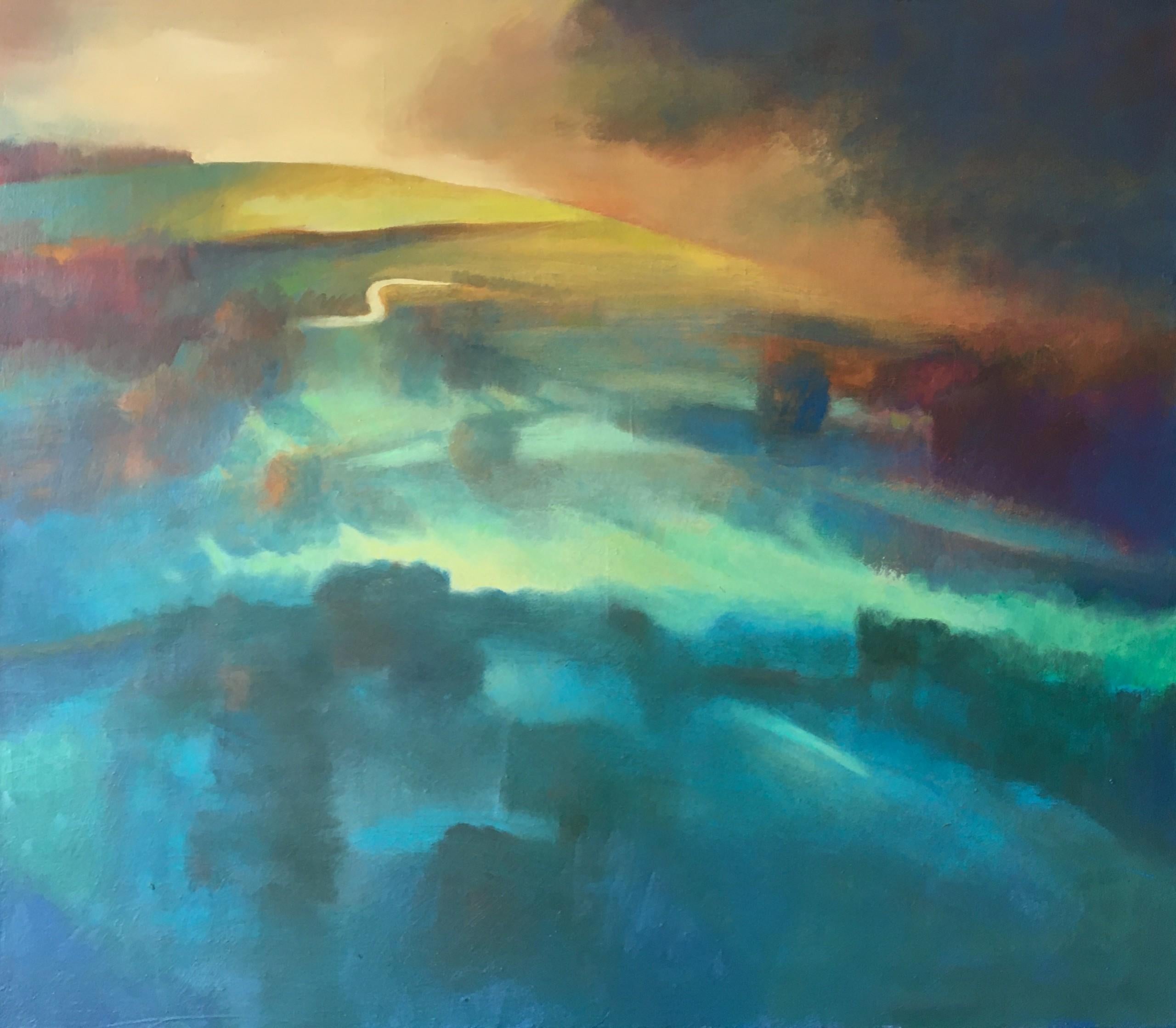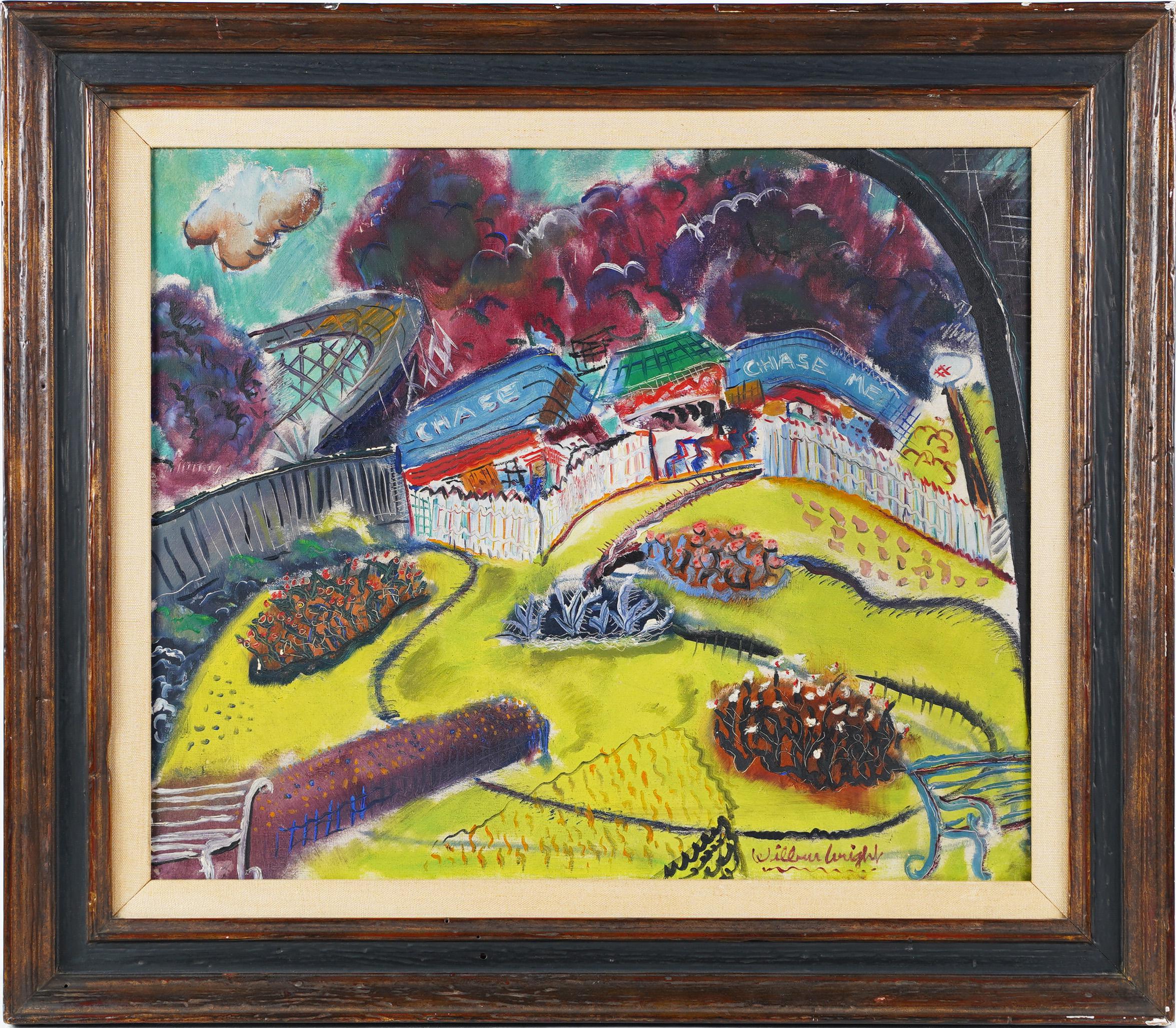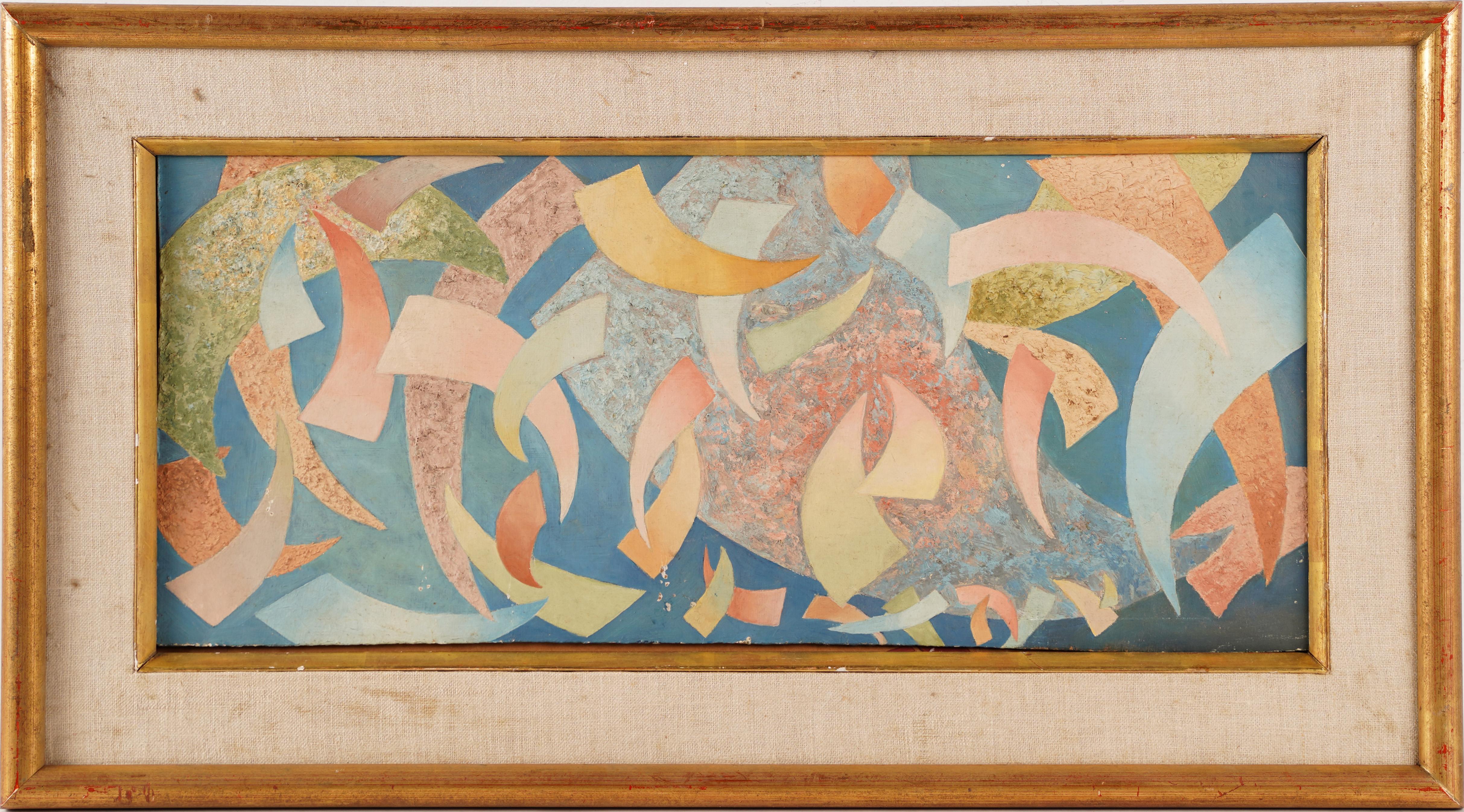Items Similar to Signed 1956 Antique American School Modernist Abstract Indian Space Oil Painting
Want more images or videos?
Request additional images or videos from the seller
1 of 12
UnknownSigned 1956 Antique American School Modernist Abstract Indian Space Oil Painting1956
1956
About the Item
Impressive and large mid century abstract painting. Signed and dated illegibly lower right. Oil on canvas.
- Creation Year:1956
- Dimensions:Height: 28 in (71.12 cm)Width: 40 in (101.6 cm)Depth: 2 in (5.08 cm)
- Medium:
- Movement & Style:
- Period:
- Condition:
- Gallery Location:Buffalo, NY
- Reference Number:1stDibs: LU139213907582
About the Seller
4.9
Platinum Seller
These expertly vetted sellers are 1stDibs' most experienced sellers and are rated highest by our customers.
Established in 1970
1stDibs seller since 2015
2,397 sales on 1stDibs
Typical response time: 1 hour
- ShippingRetrieving quote...Ships From: Brooklyn, NY
- Return PolicyA return for this item may be initiated within 2 days of delivery.
More From This SellerView All
- Antique Southern School Civil War Cannon Modernist American Landscape PaintingLocated in Buffalo, NYNice quality modernist painting. Oil on canvas. Framed. Image size, 16L x 12H.Category
1930s Modern Landscape Paintings
MaterialsCanvas, Oil
- Vintage Mid Century Fauvist American Modernist Amusement Park Oil PaintingLocated in Buffalo, NYA Painting depicting an amusement park exploding in vibrant colors. The painting is signed "William Wright" lower right. Oil on Canvas. 20 x 24. Nicely framed.Category
1940s Modern Landscape Paintings
MaterialsCanvas, Oil
- Vintage American School Abstract Original Surreal Sky Study Oil PaintingLocated in Buffalo, NYAntique American modernist abstract painting. Oil on board, circa 1950. Unsigned. Image size 20L x 10H. Housed in a period modern frame.Category
1950s Modern Abstract Paintings
MaterialsCanvas, Oil
- Buffalo New York Regionalist Modern Landscape Signed Exhibited Rare Oil PaintingLocated in Buffalo, NYAntique American modernist landscape painting signed "Welch '42". Oil on board, circa 1942. Signed. Image size, 16L x 14H. Housed in a modern frame.Category
1940s Modern Landscape Paintings
MaterialsCanvas, Oil
- Antique American Mid Century Modern Cubist Abstract Architectural Oil PaintingLocated in Buffalo, NYVintage American school modernist painting. Oil on canvas, circa 1940. Unsigned. Image size, 30L x 24H. Housed in a period frame.Category
1940s Modern Landscape Paintings
MaterialsCanvas, Oil
- Antique American Modernist New York City Street Scene Abstract Oil PaintingLocated in Buffalo, NYAntique American modernist signed original oil painting. Oil on canvas, circa 1930. Signed illegibly. Image size 20L x 16H. Housed in a period giltwood frame.Category
1920s Modern Landscape Paintings
MaterialsCanvas, Oil
You May Also Like
- Israeli Modernist Abstract Expressionist Jerusalem Kotel Oil Painting JudaicaBy Efraim ModzelevichLocated in Surfside, FLEfraim Modzelevich (1931-1995) Work is abstract in subject, and expressive in terms of technique. The artist uses a muted color palette, and thick layers of paint to build up his co...Category
Mid-20th Century Modern Abstract Paintings
MaterialsCanvas, Oil
- Large Polish French Paris Scene Mid Century Modernist Oil Painting Moulin RougeBy Abram KrolLocated in Surfside, FLWonderful scene of the Moulin Rouge cabaret nightclub at Place Pigalle in Paris. Painted in wonderful moody blue and red colors. Size includes frame. Abram Abraham Krol was born January 22, 1919, in Pabianice (Lodz), Poland. Abram Krol went to France in 1938 to study civil engineering at the University of Caen. In 1939 at the beginning of World War II he joined the Foreign Legion. After he was demobilized, he became a mechanic in a garage in Avignon. Although Jewish, he survived the war with a false identity. In 1943, Krol started studying to be an artist, taking courses in sculpture at the city’s School of Fine Art. He also began studying painting and self-described himself as a “Sunday painter.” Krol moved to Paris in 1944. The first exhibition of his work was in 1946 in the Katia Granoff Gallery in Paris. After the war, Krol took up engraving, studying that art form with an engraver he met in Paris. Krol reflected his Hasidic childhood often using Biblical themes in his art works. He said, During all my years of childhood I had read the Bible endlessly. I came back to the Bible because I was on solid ground there. It was part of the assertion of my own truth after a time of complacency. It seemed to me that in painting or engraving there were so many reefs to avoid, so many possibilities of setback, that I had to have all the odds in my favor do what I could—say what I had to say. Krol illustrated over 20 literary works from the late 1940s through the 1960s. He also engraved medals for the Paris mint and painted murals for schools in France. He designed tapestries and painted approximately 200 enamels. Museums and libraries which own Krol’s art works include the Bibliotheque Nationale in Paris; the Victoria and Albert Museum in London; the British Museum; Houghton Library, Harvard; Bodleian Library, Oxford, and the Palace of the Legion of Honor in San Francisco. Krol has had numerous one-man shows throughout Europe, Brazil, and in California. In 1960, Krol was invited to the Venice Biennale. He was awarded the Critics Prize in 1958. He also won the Feneon Prize among other honors. Krol died on October 9, 2001. The School of Paris, Ecole de Paris, was not a single art movement or institution, but refers to the importance of Paris as a center of Western art in the early decades of the 20th century. Between 1900 and 1940 the city drew artists from all over the world and became a centre for artistic activity. School of Paris was used to describe this loose community, particularly of non-French artists, centered in the cafes, salons and shared workspaces and galleries of Montparnasse. Before World War I, a group of expatriates in Paris created art in the styles of Post-Impressionism, Cubism and Fauvism. The group included artists like Pablo Picasso, Marc Chagall, Amedeo Modigliani and Piet Mondrian. Associated French artists included Pierre Bonnard, Henri Matisse, Jean Metzinger and Albert Gleizes. The term "School of Paris" was used in 1925 by André Warnod to refer to the many foreign-born artists who had migrated to Paris. The term soon gained currency, often as a derogatory label by critics who saw the foreign artists—many of whom were Jewish—as a threat to the purity of French art. Art critic Louis Vauxcelles, noted for coining the terms "Fauvism" and "Cubism", Waldemar George, himself a French Jew, in 1931 lamented that the Ecole de paris, School of Paris name "allows any artist to pretend he is French. it refers to French tradition but instead annihilates it. The artists working in Paris between World War I and World War II experimented with various styles including Cubism, Orphism, Surrealism and Dada. Foreign and French artists working in Paris included Jean Arp, Joan Miro, Constantin Brancusi, Raoul Dufy, Tsuguharu Foujita, artists from Belarus like Michel Kikoine, Pinchus Kremegne, and Jacques Lipchitz, the Polish artist Marek Szwarc and others such as Russian-born prince Alexis Arapoff. A significant subset, the Jewish artists, came to be known as the Jewish School of Paris or the School of Montparnasse. The core members were almost all Jews, and the resentment expressed toward them by French critics in the 1930s was unquestionably fueled by anti-Semitism. Jewish members of the group included Emmanuel Mané-Katz, Chaim Soutine, Adolphe Féder...Category
1950s Modern Landscape Paintings
MaterialsCanvas, Oil
- Hilltop Afternoon, Blue and Green Landscape Painting, Dorset Landscape PaintingBy Charlie BairdLocated in Deddington, GBInspired by local Dorset landscape. Discover original paintings by Charlie Baird online with Wychwood Art and in our Deddington Art Gallery. Born in Nairn, Scotland in 1955, Charlie ...Category
21st Century and Contemporary Modern Abstract Paintings
MaterialsOil, Canvas
- "Rail Crossing: Middletown, NY"By Jules HalfantLocated in New York, NYThis beautiful oil on linen canvas painting, entitled "Rail Crossing: Middletown, was executed by the esteemed artist Jules Halfant (American, 1909-2001)...Category
1940s Modern Landscape Paintings
MaterialsCanvas, Oil
- Waterfall (Woodstock, New York)By Grace Hill TurnbullLocated in Concord, MAGRACE HILL TURNBULL (1880-1976) Waterfall (Woodstock, New York), c. 1925 Oil on canvas 14 x 20 inches Unsigned PROVENANCE The Maryland Historical Society The work of pai...Category
1920s American Modern Landscape Paintings
MaterialsCanvas, Oil
- Amish Farmscape #3By Edmund LewandowskiLocated in Los Angeles, CAAmish Farmscape #3, 1984, oil on canvas, 40 x 30 inches, signed and dated lower right; signed, dated, and titled verso About the Painting Amish Farmscape #3 is part of a multi-painting series of barns completed in the early 1980s for an exhibition at New York’s prestigious Sid Deutsch Gallery. Lewandowski painted this work at an important point in his career. It was the first major project undertaken by Lewandowski after his retirement from serving as the Chairman of Winthrop University’s Art Department, the last academic position he held after teaching for nearly thirty years. Lewandowski had been inspired to work on the series by a visit to Lancaster County, Pennsylvania. Like his friend and mentor, Charles Sheeler, Lewandowski had always been fascinated by vernacular architecture and the Amish barns of Pennsylvania brought back memories of rural scenes Lewandowski had painted in the Midwest much earlier in his career. Amish Farmscape #3 is a strong example of Lewandowski’s late precisionist work. The complexity of the composition and Lewandowski’s technical acumen are on full display. Being relieved of the burdens of teaching and administering a university art department likely allowed Lewandowski greater freedom and most importantly more time to complete the Amish Farmscape series. Although Lewandowski’s brand of precisionism changed throughout the years, he never deviated from the core tenets of the Immaculate School artists. In this work, we see simplified and flattened forms, the use of ray-lines to define light and space, the elimination of extraneous details, a polished almost machine-like finish, and the complete lack of visible brushstrokes, all hallmarks of the precisionist painters. Lewandowski was the last of the 20th century precisionists and in Amish Farmscape #3, we see just how successfully he continued to work in this style until his death in 1998. About the Artist Edmund Lewandowski was among the best of the second-generation precisionist painters. He was born and raised in Milwaukee, Wisconsin and studied at the Layton School of Art with Garrett Sinclair. Lewandowski achieved early success when in 1936 two of his watercolors were shown at the Phillips Collection as part of a Federal Art Project exhibition. Then, in 1937, his work was first exhibited at Edith Halpert’s Downtown Gallery which represented Lewandowski into the 1950s. Under Halpert’s guidance, Lewandowski continued to explore watercolor as his main medium during the 1930s and 1940s, since the gallery already represented Charles Sheeler, who worked primarily in oils. Sheeler became Lewandowski’s major influence as the primary leader of the ill-defined, but very recognizable Immaculate School artists, which included other Downtown Gallery painters, Niles Spencer, George Ault, and Ralston Crawford, as well as Charles Demuth and Preston Dickinson, both of whom died at a young age and had been represented by the Charles Daniel Gallery. Sheeler is credited with giving Lewandowski technical advice on how to make his paintings more precise and tightly rendered and by all accounts, Sheeler was a fan of Lewandowski’s work. Through the Downtown Gallery, Lewandowski’s paintings were accepted into major national and international exhibitions and purchased by significant museums and collectors. Franklin and Eleanor Roosevelt and Nelson Rockefeller acquired works by Lewandowski. He was included in the Museum of Modern Art’s important 1943 exhibition, American Realists and Magic Realists as well as juried exhibitions at the Whitney Museum of American Art, the Pennsylvania Academy of Fine Arts, and the Art Institute of Chicago. Lewandowski also completed commissions for magazines during the 1940s and 1950s, including several covers for Fortune. Throughout his career, Lewandowski explored urban and rural architecture, industry, machinery, and nautical themes. Looking back on his career, Lewandowski wrote, “My overwhelming desire as an artist through the years has been to record the beauty of man-made objects and energy of American industry on canvas. For as far back as I can recall, the cityscapes, farms and depictions of industrial power and technological efficiency has had a great attraction for me. I try to treat these observations with personal honesty and distill these impressions to a visual order.” Lewandowski is credited with extending precisionism to the Midwest and successfully continuing the style into the 1990s, three decades after Sheeler’s death and six decades after Demuth’s passing. Late in his career, Lewandowski enjoyed a resurgence of popularity as he was represented during the 1980s by New York’s Sid Deutsch and Allison Galleries...Category
Mid-20th Century American Modern Landscape Paintings
MaterialsCanvas, Oil
